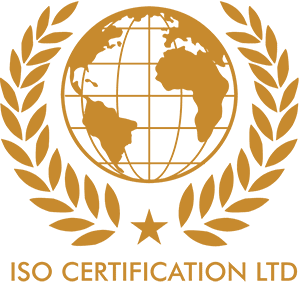T: 01202 779455M: 07808 666380E: Contact us


CE Marking- BS EN1090 Structural Steel & Aluminium
The CE Marking – BS EN 1090 for structural steel and aluminium is a requirement for products to be sold in Europe. Any organisations who design and/or manufacture steel or aluminium components must adhere to this standard.
Whether in the form of steel frames or metal roofing, any structural engineers, component manufacturers, and anyone with a hand in the steel or aluminium based components that go into metal buildings/building work, should be aware of this.
Here at ISO Certification limited, we can provide various testing and certification services to help you get your products to market.
Since July 2014, structural steelwork and aluminium fall under the Construction Products Regulation (CPR), which means aluminium or structural steel CE marking must be secured to show compliance with EN 1090-1 (the harmonised European standard that applies to structural metalwork).
This covers any structural component that has been designed and fabricated to meet the BS EN 1991 series of standards (Eurocode 3 and 9) for steel and aluminium structures in buildings. And you now need to show that they comply with BS EN 1090-1. ISO Certification Limited can help you to achieve this Certification.
If you have any questions about The CE Marking – BS EN 1090 for structural steel and aluminium or are interested in getting certified then that is what we are here for.


The Construction Products Directive (CPD) of 1989 was introduced in order to provide a common framework across the whole of the European Union to ensure the integrity of buildings and construction works. Because fabricated steel components are deemed “safety critical”, if your Company are involved in the manufacture or supply of these products then under the CPD it is now a legal requirement for your business to adhere to the stringent requirements of BS EN 1090. You must also ensure that your products are appropriately CE marked. Introducing BS EN 1090 and its constituent parts BS EN 1090 (Execution of steel structures and aluminium structures – Technical requirements for steel structures) is the harmonised European standard covering fabricated structural steelwork. It comprises three parts:
- EN 1090-1: CE Marking- details the requirements for assessing and verifying product or service conformity.
- EN 1090-2: Details the technical requirements in the manufacture and assembly of steel structures.
- EN 1090-3: Details the technical requirements in the manufacture and assembly of aluminium structures.
The standard affects all companies who manufacture, process and sell steel, stainless (EN 1090-2) and aluminium (EN 1090-3) structures and structural products within the EU.
Steps to Certification
- Is the construction product, as defined by the CPR, made from steel or aluminium?
- Is the product load-bearing?
- Has the product been installed in a permanent manner?
- Is the product within the scope of EN 1090-1?
- Does the product fall into the scope of another harmonised standard?
Once it has been established that you will need to CE Mark one or more of your products, the next task for you as a manufacturer is to determine which Execution Class you require.
STEP 2 – Identify the correct Execution Class
From 1st July 2014 all fabricated structural steelwork delivered to site has to be CE Marked. To comply with the new mandatory regulations only steelwork contractors with an Execution Class equal to that required for a project should be considered.
BS EN 1090 sets out four Execution Classes (EXC’s), outlined below. These classes are based on the end use of the structure and how critical it would be if it failed:
- EXC1 – e.g. Agricultural buildings (Welded construction up to and including Grade S275 material)
- EXC2 – e.g. Residential or Commercial structures
- EXC3 – e.g. Bridges or Stadia type buildings
- EXC4 – e.g. Special structures (long-span bridges, frames for structures within the nuclear sector and structures within high seismic active areas) etc.
STEP 3 – Factory Production Control Assessment/Certification
Working with ISO Certification Limited, we can now select a notified body to have your factory production control assessed against your stated Execution Class.
If you already have a robust factory production control system or ISO 9001 in place, you’re already on your way to achieving CE Marking.
As part of achieving a CE Mark, you will require third-party assessment and certification from a notified body.
Assessment
A notified body will carry out:
- Initial inspection of your manufacturing plant
- Initial inspection of your FPC
- Continuous surveillance, assessment and approval of your FPC, which will typically include an annual audit to ensure continued competence to the declared Execution Class
The notified body will then issue an FPC certificate and Welding Certificate identifying the Execution Class that you have achieved.
Certification
To gain certification and be awarded a CE Mark, you are required to undertake the following:
- Initial type-testing of your products
- Factory Production Control which includes:
- Implementation of FPC system procedures
- Appointment of a responsible welding coordinator (RWC)
- Implementation of welding quality management system (WQMS) procedures
- Further testing of samples taken at the factory in accordance with the prescribed test plan
You can now start CE Marking and producing your declaration of performance for each product.
ISO Certification Limited can provide companies with the implementation of the full requirements to meet the EN1090 Standard
We can provide you with the implementation and requirements of gaining Qualified Welding procedures, Welder Qualifications to the required standards, full FPC implementation, NDT Requirements and RWC training and qualifications.



How Can ISO Certification Ltd. Help You?
- Our expert knowledge and industry experience of more than 15 years gives us an edge over other consultants to guide you properly during the achievement of right CE marking directive.
- Our training modules are conceptualised and are industry requirement specific to the needs of the organisation providing complete understanding and proper training to the personnel’s that can solve CE marking related issues easily.
- We will guide you throughout the entire CE marking compliance and implementation till achievement of certification.
- Our business profile analysis process undertaken before start of any project makes sure to utilise the existing resources and documentation thus ensuring no repeats.
- Our expertise in the given sector will provide you with proper budget knowledge of the project beforehand without you paying any additional expenses afterwards.
- Our stringent audit methods implemented during the internal audit ensures no failures during the certification audit.
Want Expert CONSULTING advice ? – Start your consultation with us now !
With a team of highly qualified consultants and trainers having vast industrial experience, ISO Certification Ltd assists organisations across the UK to implement and achieve CE certification. Our consultation approach is highly professional, time bound and effective, resulting in the ease of implementation and adding value to the business processes of the client’s organisation.





